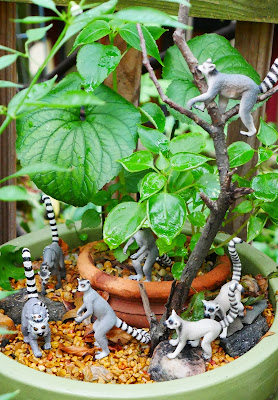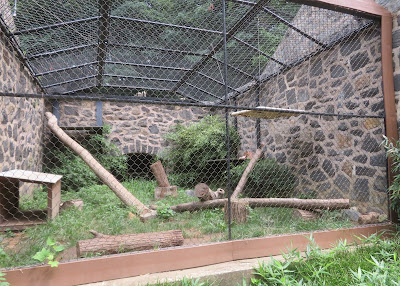Sunday, July 28, 2024
"Botticelli's Studio: The First Visit of Simonetta presented by Giuliano and Lorenzo de' Medici," 1922 by Eleanor Fortescue Brickdale (1872 - 1945)
The Delaware Art Museum is possibly my favorite regional art museum. What it may lack in breadth it more than makes up for in depth. It is home to one of the finest collections of 1) Pre Raphealite Art, 2) the works of John Sloane (1871 - 1952), and 3) American Illustrators (Circa 1890 - 1940). Add to this a nice selection of works of 19th Century American Artists and a growing collection of Modern and Contemporary Art.
I'm quite familiar with the layout and highlights of the collection, so when I go now, I try to latch onto particular works and spend quality time with them. Then research their artist and continue to contemplate them after the visit. One of the trends that the Delaware Art Museum has really embraced is elevating the works by marginalized artists: women and men of color. I find this very exciting in my desire to extend my experience of art beyond the patriarchal canon.
On my most recent visit, I was captivated by this work with the crazy long title: "Botticelli's Studio: The First Visit of Simonetta Presented by Giuliano and Lorenzo de' Medici". The work was painted in 1922 by the British artist Eleanor Fortescue Brickdale (1872 - 1945). I begin by comparing what I know against what I want to know, and what I see in the work itself.
What the placard on the wall tells me:
"In this historical scene, the Renaissance beauty Simonetta Vespucci visits the studio of Sandro Botticelli. Giuliano (bowing) and Lorenso de' Medici escort her. At left, Botticelli stands in front of one of his most famous paintings, the Madonna del Magnificat.
"Eleanor Fortescue Brickdale was a late Pre-Raphaelite painter who began exhibiting at the Royal Academy in 1899.
"Botticelli is not only the subject of the painting, but also a source of inspiration for Brickdale and the Pre-Raphaelites."
What do I want to know? First of all, more about the life of the artist. Second, more about the subjects of the work--especially Simonetta Vespucci: is she related to Amerigo? (She is--a distant cousin.)
What I discovered: 1) Eleanor was born in an educated family with a father who was a successful barrister (lawyer). His success provided her with the means to pursue her artistic predilections. Her means and her talent gave her access to influential people who provided the necessary introductions that led to her entry as a student in the Royal Academy at the age of 24 in 1896. She was mentored by artists who drew their academic experience from influential Pre Raphaelite artists like John Everett Millais, which shore up her pedigree. She was an accomplished artist in multiple mediums: Oil, watercolor, and later in life, stained glass. To manage her fiscal needs, she accepted an invitation to teach art. Looking at her body of works, she often chose to highlight the presence of women in her paintings. In 1919, an entire book full of her paintings featuring women was published under the title "Eleanor Fortescue Brickdale's Golden Book of Famous Women."
2) Simonetta Vespucci was a Genoan noblewoman who was considered the super model of her age. She is speculated to be the inspiration for many of Botticelli's most famous paintings; most notably Venus in his monumental work "The Birth of Venus" a.k.a. Venus on a Half Shell.
In choosing this subject, she has conspired to present us with one of the great introductions of the era of Renaissance Art. Now the picture becomes even more interesting, no?
It is a theatrical moment. The actors are playing roles with ramifications beyond this instance. And where is the power dynamic? The de' Medici's? They are confident in their status, but ultimately bit player. Botticelli? A young man making his future and seeing in this beautiful woman an inspiration. Vespucci? Ah, she placed in the center of the painting for a reason. Everything else rests with her. Therein is the magic. Without her, would there ever be "A Birth of Venus"?
Some details and references for your consideration.
Friday, July 26, 2024
My Little Garden Zoo: The Primates and Arboreal Dwellers
Last we looked at the Reptiles and Amphibians, now, let's go in the opposite evolutionary direction: The Primates! I am also including my Sloth, though I know sloths are not primates.
AFRICA
Brandywine Zoo: Wilmington, DE
In my life I have taken a complete 180 on the idea of Zoos. I used to think they were relics of paternalistic paradigms: "man's" dominion over the natural world. No doubt, that may have been part of the ethos in their inception. It is not where good zoos reside today. Modern zoos prioritize animal care, guest education and conservation, and above all species survival. Dozens of animals would be extinct today, without the intervention and research/discovery of accredited zoos.
As you know, I volunteer at the Maryland Zoo in Baltimore. I love the Maryland Zoo, but I'm poly-amorous, too, with a soft spot for little zoos. Among them, I hold in high esteem: The Sequoia Park Zoo in Eureka, CA, the Superior Zoo in Duluth, MN, the Buttonwood Park Zoo in New Bedford, MA and the Brandywine Zoo in Wilmington, DE. Fortunately, Wilmington, DE is an easy day trip!
Brandywine is an old zoo. It was founded in 1911 on the slope of the flood plain of the Brandywine River in the heart of Wilmington, DE. Its placement was the result of a decision made by the founding father of urban park design, Frederick Law Olmsted, who designed the rest of the riverside park. Because of its location, it is necessarily small, just under 5 acres. This has both positive and negative implications, and it's been a joy to watch how the zoo has capitalized on the positives over the past 20 years.Recognizing how precious the real estate is, it has chosen to pursue excellence over abundance. You'll not see some impossible to believe statement of the number of species, there are about 30-35 on public view at any given time. It's doable in an hour or so with space for a picnic lunch to cap it off. With renovation plans on going, the zoo sports a new 3.5 million dollar multi-species habitat for 3 endangered species of Lemurs, along with tortoises and ground fowl. They have a new million dollar animal care facility. Upgrades to all of its habitats with the introduction of several new species: Red Pandas, Toco Toucans, Southern Pudu, Binturong, and Giant Anteaters--along with the Ring-tailed, Crowned, and White and Black Lemurs. And the future is bright. From my recent visit.



The final habitat is home to another relatively new species at the zoo, a pair of Binturong siblings, Zulla and Bintang who were born at the Potter Park Zoo in Lansing, MI back in 2022.



































































